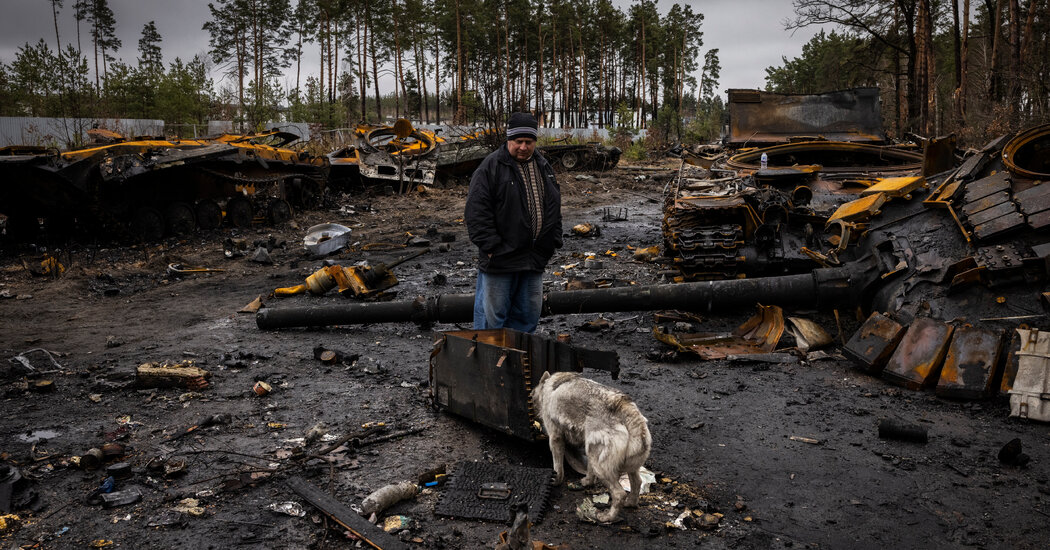
KYIV, Ukraine — The Russian forces that stormed toward Kyiv in the opening days of the war in imposing tanks columns were in retreat from the capital on Saturday, pulling back under fire in dozens of outlying towns and villages and leaving behind burned tanks and dead soldiers, according to Ukrainian officials, satellite images, military analysts and reporting from the towns themselves.
Russian attacks elsewhere in Ukraine have not abated, and the Pentagon has cautioned that Russian formations near Kyiv could be repositioning to refit or resupply for renewed assaults. But by Saturday, suburban towns just outside Kyiv that had for weeks echoed with a cacophony of gunfire and artillery booms had gone quiet.
“The initial Russian operation was a failure, and one of its central goals, the capture of Kyiv, proved unobtainable for Russian forces,” Michael Kofman, the director of Russian studies at C.N.A., a research institute in Arlington, Va., said in a telephone interview.
Ukraine’s military asserted on Friday that it had captured Bucha, another key outlying town to the north of Kyiv on the west bank of the Dnipro River, as Russian forces pulled back.
And on the river’s east bank, Ukrainian forces were pressing forward in villages dozens of miles from the capital, according to an intelligence officer with the S.B.U., the Ukrainian domestic intelligence service, who declined to be identified for security reasons.
In settlement talks with Ukraine this week, Russia had said that it would reduce military activity near Kyiv and a provincial city to the north, Chernihiv, essentially acknowledging that its forces there had become bogged down.
But in subsequent days it had remained unclear whether the Russian forces were indeed retreating or whether the back-and-forth fighting in the suburbs was merely continuing apace, as it had for most of the monthlong war. Street fighting continued in Irpin as recently as Wednesday, Ukrainian soldiers said.
By Friday, the town of Irpin northwest of Kyiv, which had been an epicenter of fighting in the battle for the capital’s suburbs, was secure enough for the Ukrainian police to organize a press tour, driving reporters to view, and photograph, the hulks of destroyed Russian tanks.
The town, once a middle-class suburb, was shrouded in mist and the streets were quiet except for barking of abandoned dogs and the crunching of broken glass underfoot.
A short drive from Kyiv in any direction on an arc from the northeast to the northwest of the city turns up such scenes: armored vehicles, incinerated or torn apart by their own exploding stores of munitions and scattered, charred engine parts and chunks of armor.
At one spot, beside a housing development in Irpin called Sweet Home, a ferocious blast had peeled open an armored personnel carrier but somehow left a metal storage compartment undamaged. Inside was a pile of cashews.
The explosion also left behind a boot and a tank helmet. The body had already been collected.
The debris is an indication of what Ukrainian soldiers say were poor tactics by Russia’s army, which before the war was viewed as modern, sophisticated and well organized. Its flaws have become increasingly evident in the battle for Kyiv as it proceeded with convoys of armored vehicles into a myriad of punishing ambushes for weeks, eventually grinding down its combat effectiveness.
“They had terrible logistics and reconnaissance,” said Serhiy Smolchuk, a Ukrainian volunteer soldier, standing beside another burned armored personnel carrier. “They came into these streets like blind cats.”




